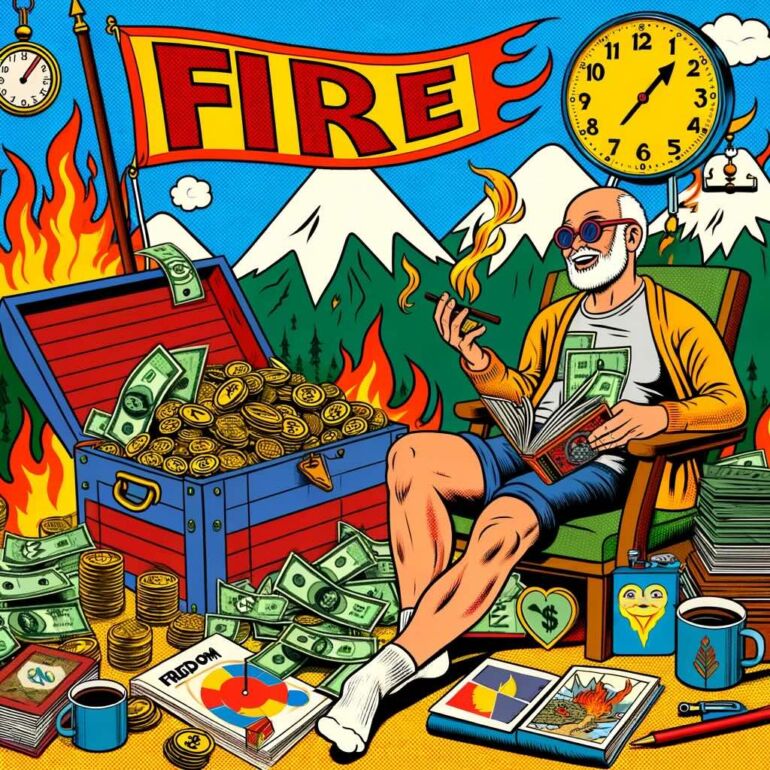“Make hay while the sun shines.” We’ve all heard this age-old proverb, and yet, in the context of financial independence, we often fail to heed this sage advice. Enter FIRE (Financial Independence, Retire Early) – a compelling financial philosophy that’s been igniting the imaginations and aspirations of countless individuals around the globe. If you’re in your 40s and this acronym hasn’t crossed your radar yet, get ready for a transformative paradigm shift.
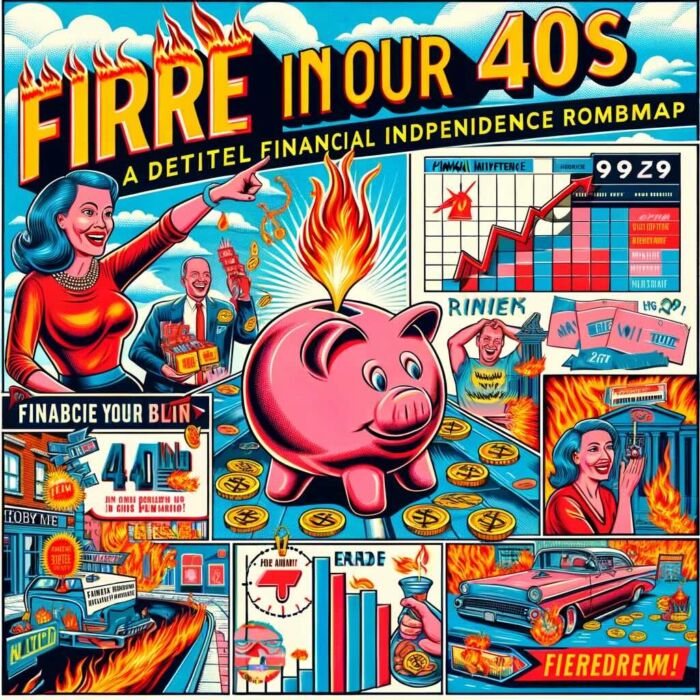
FIRE is more than just an economic strategy; it’s a lifestyle, a mindset, and a powerful tool for achieving freedom from the 9-5 grind. Financial Independence, Retire Early (FIRE) is a movement that encourages people to live frugally and invest aggressively, all in pursuit of the sweet freedom to retire early and spend their golden years pursuing passions rather than being tethered to a paycheck.

Financial Independence In Your 40s
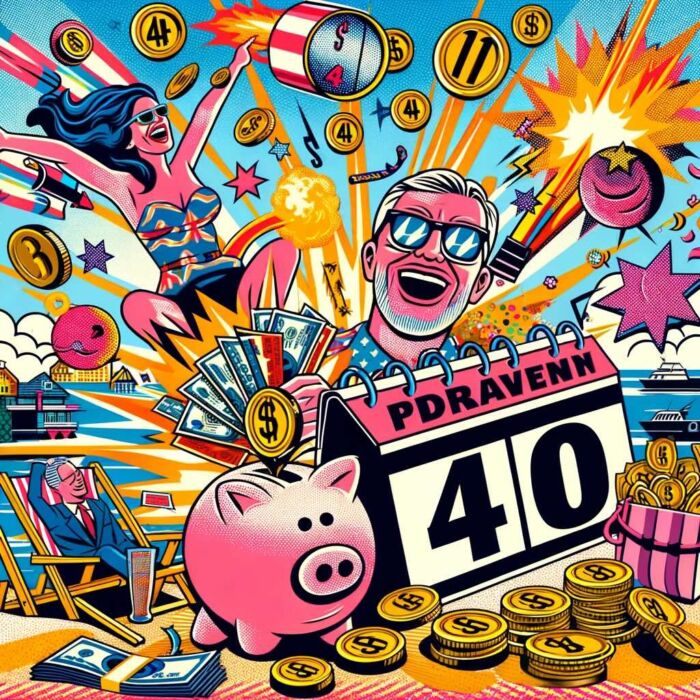
The lustrous allure of FIRE is undeniable. Imagine, a life not dictated by the alarm clock but by your passions, whims, and fancies. A life where Mondays become as enjoyable as Fridays. A life where you’re no longer trading your time for money but instead, your money is working for you. That’s the power of achieving FIRE.
Now, you may wonder, why start in your 40s? Well, contrary to the popular notion, your 40s are not too late for you to embrace the FIRE movement. In fact, it’s a significant phase when most people find their career peaking, debts reducing, and a sense of financial stability beginning to take hold. It’s also a time when many of us start to question the essence of life and crave more flexibility, autonomy, and time for our loved ones or to pursue personal interests. This introspection and the accompanying financial stability make your 40s an excellent time to hop on the FIRE journey.
So, if you’re in your 40s and the idea of achieving financial independence and retiring early sounds like music to your ears, you’re in the right place. This detailed roadmap will light your way towards financial liberation. Embrace the FIRE, enjoy the warmth, and let’s re-script your financial story together. The clock’s ticking, and it’s time to make your money work for you. Let the journey to FIRE begin!

Understanding the Basics of FIRE
Buckle up, my aspiring FIRE enthusiasts, for we’re about to delve into the nitty-gritty of Financial Independence, Retire Early. Understanding the essence of FIRE starts with wrapping your head around three crucial pillars – The 4% rule, The 25x Rule, and the vital trio of FIRE calculations: Income, Expenses, and Savings Rate.
The 4% rule
Picture this, you’ve amassed a treasure chest of investments, and you’re ready to bid adieu to your day job. But how much can you safely withdraw each year without the risk of your wealth running dry? Enter the 4% rule, your compass in the unchartered territory of retirement withdrawals. This rule, born out of a study by financial advisor William Bengen in 1994, suggests that you can withdraw 4% of your portfolio value in the first year of retirement, adjusting it annually for inflation, without worrying about running out of money for at least 30 years.
The allure of the 4% rule lies in its simplicity and its historical success. The market may surge, and it may plummet, but as long as you stick to your 4%, your portfolio should weather the financial storms for three decades or more. Remember, however, the 4% rule isn’t an invincible shield. It’s a guideline, a starting point that you need to adapt based on your personal circumstances, market conditions, and retirement length.
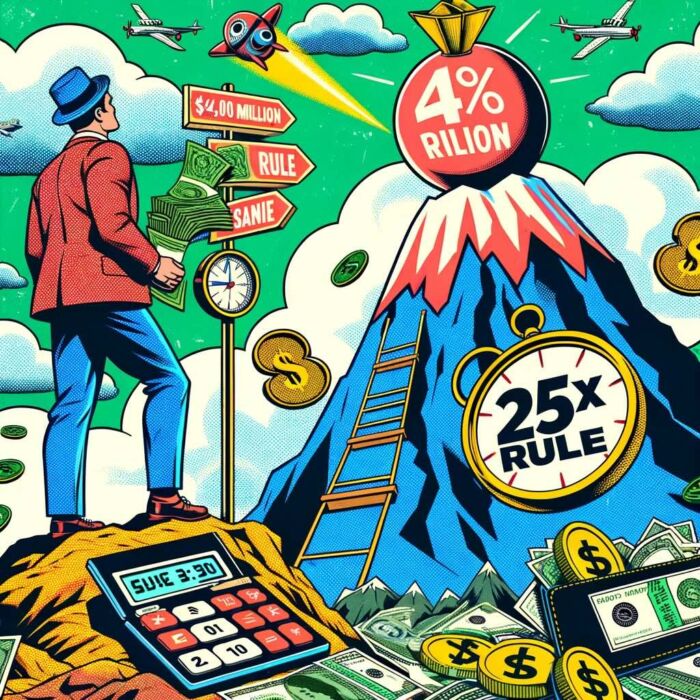
The 25x Rule
If the 4% rule is your compass, the 25x rule is your map. It’s a simple, back-of-the-envelope calculation to ballpark the nest egg you need to retire. The rule posits that you should aim to accumulate 25 times your annual expenses before you can punch your final timecard. For instance, if you spend $40,000 a year, you’ll need a whopping $1 million ($40,000 x 25) to retire.
Sure, seeing that six or seven-figure goal can be as daunting as standing at the foot of Mount Everest. But don’t let the magnitude dishearten you. Remember, every long journey begins with a single step, and every big nest egg starts with the first dollar saved. So, keep your eyes on the prize and keep saving and investing diligently.
FIRE calculation: Income, expenses, savings rate
Finally, we arrive at the holy trinity of FIRE calculations: Income, Expenses, and Savings Rate. This triad forms the engine that propels your journey towards FIRE.
Your income is the fuel. It’s not just your salary; it includes all sources – your side hustle, rental income, dividends, you name it. The more income streams you can create, the faster you can drive towards your FIRE destination.
Expenses are the speed breakers. The lower your expenses, the less money you need to live on each year, and by the virtue of the 25x rule, the smaller your required nest egg. Therefore, a key strategy in the FIRE philosophy is frugality – curbing expenses without sacrificing the joy of living.
The savings rate is your accelerator pedal. It’s the percentage of your income that you’re able to save and invest. The higher your savings rate, the quicker you reach FIRE. People in the FIRE community often aim for a lofty 50% savings rate or more, a stark contrast to the average American savings rate, which hovers around 7.6% as of 2020.
In the race to FIRE, your income, expenses, and savings rate are intertwined. Boosting your income and curbing your expenses both contribute to a higher savings rate, accelerating your progress towards financial independence.
So there you have it, my fellow FIRE enthusiasts. The 4% rule, the 25x rule, and the sacred triad of FIRE calculations. With these concepts at your fingertips, you’re equipped to tackle the exciting journey of Financial Independence, Retire Early head-on. Let’s fan the flames of your financial freedom!
source: ET Money on YouTube
Why Start FIRE in your 40s?
To the skeptics out there who may question, “Why the rush to retire in your 40s?”, allow me to shed light on the magic of this transformative decade. Yes, starting your FIRE journey in your 40s has its pros and cons, and through the inspiring stories of those who’ve walked this path, you’ll see how the advantages can often outweigh the hurdles.
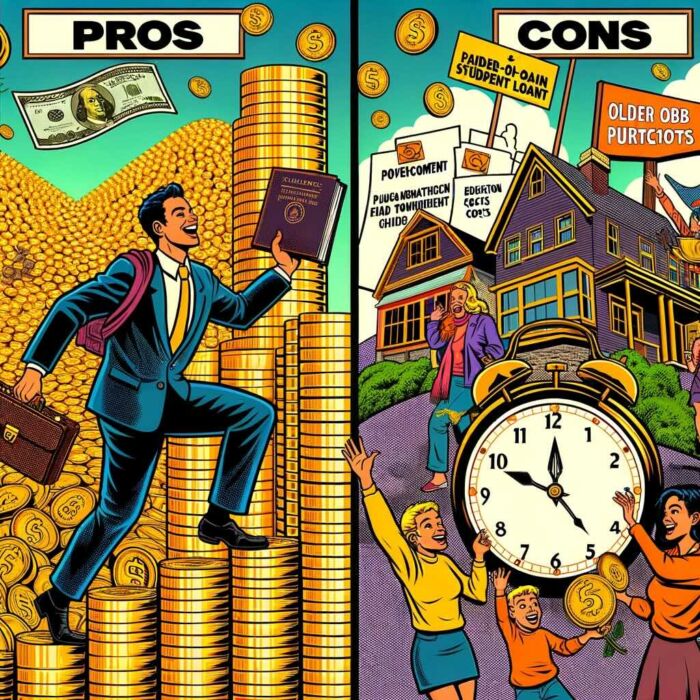
Pros and Cons of Starting FIRE Journey in Your 40s
Let’s start with the pros. For many, the 40s are the Goldilocks decade of their career – a time when experience, ambition, and earning potential merge into a fruitful peak. The student loans that once gnawed at your paycheck may now be paid off. You’re likely commanding a higher salary than your younger self, and if you’ve been wise with your money, you’ve probably started accumulating assets. With children growing older and becoming more independent, the heavy childcare expenses start to wane. These factors, coupled with a heightened awareness of life’s brevity, create a perfect launchpad for your FIRE journey.
However, the path to FIRE isn’t strewn with roses alone. There are thorns to be wary of, the cons. In your 40s, you may face substantial financial responsibilities such as mortgage payments, children’s education costs, or caring for aging parents. You may also grapple with the unsettling reality that the more time you spend in the workforce, the less time you have to enjoy your retirement. Yet, the beauty of FIRE is that it’s not a one-size-fits-all approach; it’s flexible, adaptable, and there’s always room to pivot and course-correct.
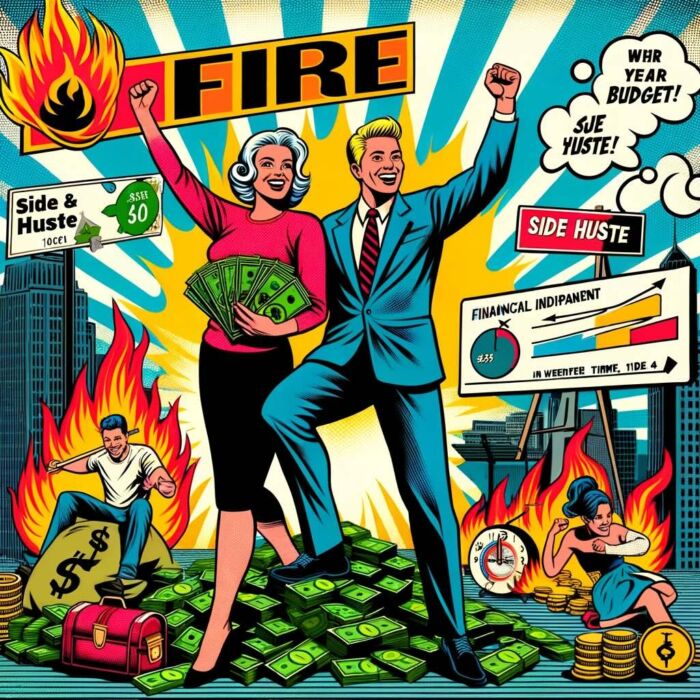
Case Studies: Success Stories of People Who Started FIRE in their 40s
Now, let’s bring these pros and cons to life with some real-world case studies.
Take, for instance, the story of James and Lisa, a couple who started their FIRE journey in their early 40s. They were both earning a decent income, but they felt like hamsters on a wheel, continually running but never arriving. Inspired by the FIRE movement, they began slashing their expenses, boosting their income through side hustles, and diligently investing. Within a decade, they had amassed enough wealth to say goodbye to their 9-5 grind. Today, they lead a fulfilling life pursuing their passions and spending quality time with their children.
Next, let’s look at Maria, a single mother who started her FIRE journey at 45. Despite her late start and the responsibility of raising a child alone, her determination was undeterred. She embarked on an aggressive saving and investing strategy, reduced her living expenses, and even started a successful side business to boost her income. Today, at 55, Maria is enjoying her early retirement, free from financial stress, and has enough time to dote on her grandkids.
These stories are not exceptions; they’re sources of inspiration, showing us that starting the FIRE journey in your 40s is not just possible, but also rewarding. It may seem like a steep climb, but with every step, you’re getting closer to the summit of financial independence. So, lace up your boots, pack your determination, and let’s get climbing!
source: Brian Tracy on YouTube
Setting Financial Goals
Now that we’ve sparked your interest in the FIRE journey, it’s time to get down to brass tacks. No successful expedition was ever embarked upon without a map and a compass; in the realm of FIRE, this means setting clear financial goals. Let’s unravel the essentials of defining your FIRE number, crafting savings and investment goals, and creating that all-important contingency plan.

Defining your FIRE Number
Step right up, aspiring early retirees! It’s time to encounter the magical figure that will become your financial North Star: your FIRE number. This number, the sum that you’ll strive to save and invest, is your ticket to the blissful world of early retirement. Remember the 25x rule we discussed earlier? Apply that to your annual expenses, and voila, you’ve got your FIRE number.
Yes, the number might seem astronomical at first glance, but don’t let it intimidate you. It’s your mountaintop, the goal that will keep you climbing, no matter how steep the path. Keep in mind, this number isn’t static; as life throws curveballs at you, you might need to adjust your FIRE number accordingly.
Setting Savings and Investment Goals
Once you have your FIRE number in sight, the next step is to chart out how you’ll reach it. This is where savings and investment goals come into play.
For your savings goals, consider your current income and expenses, then figure out how much you can realistically put aside each month. Can you save 20% of your income? 30%? More? Remember, the higher your savings rate, the faster you’ll reach your FIRE number. However, it’s crucial to set a rate that is ambitious yet achievable, preventing burnout and keeping your journey enjoyable.
Investment goals, on the other hand, are about deciding where to put that hard-earned money to work. Are you inclined towards the steady nature of index funds, or do you want to mix it up with some individual stocks or real estate? Diversification is key here. Your investment strategy should reflect your risk tolerance, financial knowledge, and the time you can dedicate to managing your investments.
Importance of Having a Contingency Plan
Even with the best-laid plans, life often has a funny way of throwing us off course. This is where your contingency plan comes in. In the context of FIRE, this means having a backup in case things don’t go as planned.
Perhaps the market takes a major hit, or an unexpected health crisis leads to hefty bills, or maybe a global pandemic shakes up your financial stability (Sound familiar?). Your contingency plan could include an emergency fund covering 6-12 months of expenses, diversifying income streams, or keeping yourself employable with updated skills even in retirement.
Just like a good camper carries a spare tent, an aspiring early retiree must always have a contingency plan. It’s your insurance against the unexpected, your safety net that ensures a slip doesn’t turn into a fatal fall.
Crafting your financial goals is like setting the coordinates for your financial journey. With your FIRE number, savings and investment goals, and a solid contingency plan, you’re not only prepared for the path ahead, but you’re also equipped for the bumps and detours along the way. It’s time to step into your role as the master of your financial destiny. All aboard the FIRE train!
source: Finance with Sharan on YouTube
Financial Strategies for FIRE
With your financial goals in place, we’re now ready to delve into the meat and potatoes of your FIRE journey: the financial strategies. Today, we’ll focus on a key area – cutting costs and increasing savings. This two-pronged approach involves making certain lifestyle changes and embracing cost-effective living.
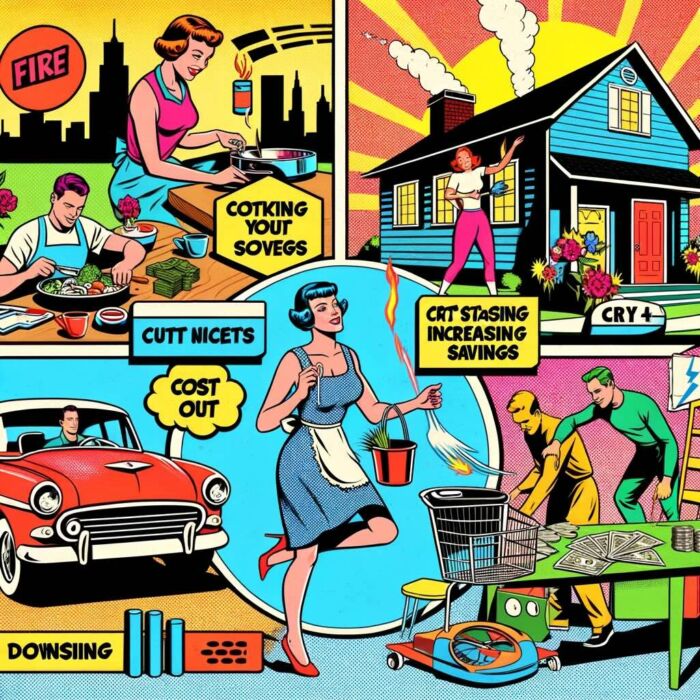
Cutting Costs and Increasing Savings
Lifestyle Changes
Starting your FIRE journey is a lot like beginning a new fitness regimen. It requires commitment, discipline, and yes, some lifestyle changes. Fear not! This isn’t about bidding adieu to all things enjoyable. It’s about achieving a balance, making mindful decisions, and realizing that some short-term sacrifices can lead to long-term gains.
For starters, take a hard look at your current expenses. See any subscriptions you rarely use? Cancel them. Dining out too often? Try cooking at home more. Have an expensive gym membership but prefer jogging in the park? It’s time to reconsider that monthly fee. The goal here isn’t to live like a hermit, but to separate your needs from your wants, prioritizing the former while being judicious with the latter.
Also, consider your larger expenses. Could downsizing your home or opting for a less flashy car significantly reduce your monthly outgoings? Remember, the aim is not to downgrade your life, but to create one where you can live comfortably without the golden handcuffs of a regular paycheck.
Cost-Effective Living
Cost-effective living is like turning lifestyle changes up to eleven. It’s about mastering the art of frugality and extracting maximum value from every dollar spent. This could mean anything from shopping at discount grocery stores, using energy-efficient appliances to reduce utility bills, to planning “staycations” instead of pricey holidays abroad.
Consider carpooling or biking to work to save on commuting costs, or entertaining at home rather than spending hefty amounts at restaurants. You could even embrace DIY culture – why pay someone to paint your walls or fix a leaky tap when you can do it yourself?
However, it’s crucial to remember that cost-effective living is not about depriving yourself. Instead, it’s about mindful spending, recognizing that every dollar saved is a dollar that can be invested towards your financial freedom. It’s about taking control of your expenses rather than letting them control you.
As the saying goes, “It’s not your salary that makes you rich; it’s your spending habits.” Embracing lifestyle changes and cost-effective living allows you to save more, invest more, and accelerate your journey to FIRE. Just remember, while it’s great to be frugal, don’t forget to occasionally treat yourself – the journey to financial independence should be a joyful one, after all!

Increasing income
Side Jobs
Now, let’s pivot our focus from minimizing outflows to maximizing inflows. In other words, it’s time to earn more dough! While this might sound daunting, the modern, interconnected world provides countless opportunities to earn extra money on the side.
Side jobs, or “side hustles” as they’re often called, can become your secret weapon in the battle towards FIRE. These can be anything from freelance writing, graphic designing, tutoring, pet sitting, driving for a ride-share company, to selling handmade crafts or vintage items online. The beauty of side jobs is that they not only bolster your income but can also provide an outlet for your passions and skills.
Remember, a side job doesn’t have to feel like a chore. Choose something that aligns with your interests and abilities, and it can be a fulfilling endeavor that pays!
Passive Income Strategies
The ultimate dream in the journey to financial independence is earning money while you sleep, right? This is where passive income strategies strut onto the stage.
Passive income is money you earn that requires little to no daily effort to maintain. It’s the holy grail of financial freedom, and while it often requires an upfront investment of time or money, the potential payoff is a steady income stream that flows in even when you’re not actively working.
Some popular passive income strategies include rental income from real estate, dividends from stocks, interest from peer-to-peer lending, earnings from a blog or YouTube channel, or royalties from a book or digital course. These income streams can help you inflate your savings without inflating your work hours.
However, it’s essential to remember that “passive” doesn’t mean “effortless”. Whether it’s maintaining rental properties, choosing the right investments, or creating engaging content, each strategy requires some effort. But with careful planning and smart decisions, these efforts can create a powerful income stream that propels you towards your FIRE goals.
To quote Warren Buffet, “If you don’t find a way to make money while you sleep, you will work until you die.” By leveraging side jobs and passive income strategies, you’re not only making money while awake but also potentially while you’re catching those Z’s. Now that’s a financial strategy worth waking up to!
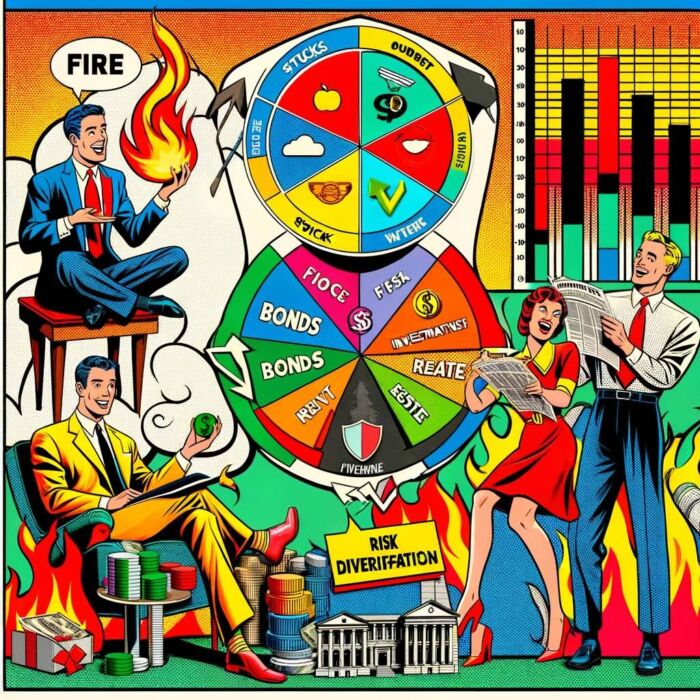
Investment strategies
Once you have mastered the art of saving and generating extra income, the next step on your journey to FIRE is learning to make your money work for you. That’s where investment strategies come into play. We’re going to delve into the big three: stocks, bonds, and real estate, along with the importance of diversification and understanding risk.
Stocks, Bonds, Real Estate
Let’s start with stocks. Owning a piece of a company may sound like a grandiose affair, but it’s one of the most accessible ways to grow your wealth. While the stock market can be a roller coaster ride, historically, it has trended upwards, making it a worthy consideration for your investment portfolio.
Bonds, on the other hand, are like the older, more predictable sibling of stocks. They don’t have the same potential for high returns, but they also don’t keep you awake at night with wild price swings. Bonds can provide stable, albeit modest, income through interest payments and offer a cushion during market downturns.
Then there’s real estate. Whether you’re buying a rental property or investing in a Real Estate Investment Trust (REIT), real estate can provide both income (through rents or dividends) and potential appreciation over time. Plus, who doesn’t like the sound of being a property owner?
Diversification
Now, just as you wouldn’t put all your eggs in one basket, it’s crucial not to put all your money in one kind of investment. Enter diversification, the practice of spreading your investments across various asset classes (like stocks, bonds, and real estate) to manage risk. By doing so, if one part of your portfolio takes a hit, the other parts can help cushion the blow. In other words, diversification can be your financial body armor, offering some protection against market turbulence.
Understanding and Managing Risk
Risk is the uninvited guest at every investment party, but understanding and managing it can make the difference between financial success and disappointment. It’s essential to evaluate your risk tolerance – your capacity to endure losses in your portfolio without panicking and making hasty decisions.
Understanding risk also involves educating yourself about your investments. Know the basics of how stocks, bonds, and real estate work, and stay informed about market trends and economic indicators. Remember, knowledge isn’t just power; in the investing world, it’s also your shield against unnecessary risk.
As you navigate the exciting world of investment, bear in mind the wise words of legendary investor Benjamin Graham: “The individual investor should act consistently as an investor and not as a speculator.” By focusing on your long-term goals and not getting swayed by short-term market movements, you can make informed investment decisions that bring you closer to your FIRE aspirations.
So, strap on your financial explorer hat and get ready to venture into the vibrant landscape of investing. With the right strategies and a dash of patience, your investments could become the sturdy ship that sails you towards the shores of financial independence.
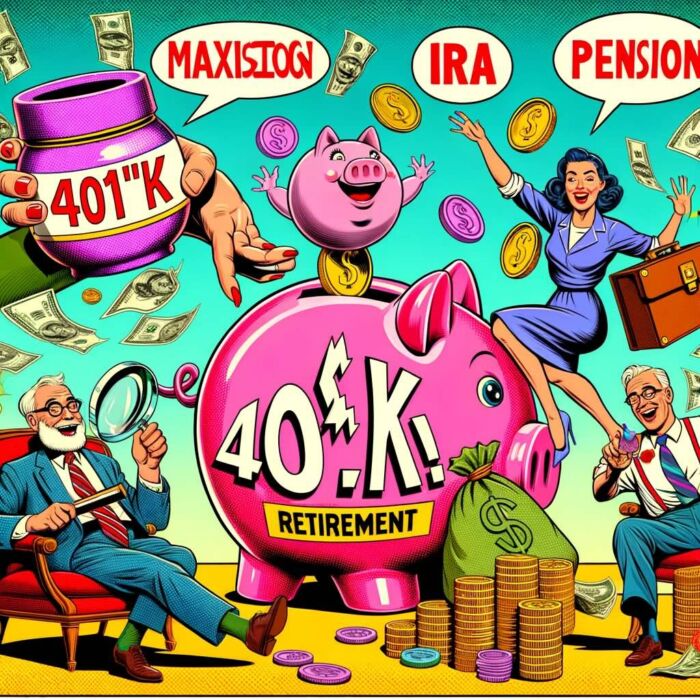
Maximizing Retirement Accounts
From slashing expenses to earning side income to investing wisely, we’ve covered various gears that propel your FIRE machine. Now, let’s turn to a powerful engine that can turbocharge your journey: retirement accounts. These accounts, with their tax advantages and compound interest magic, are essential tools for your FIRE toolkit. In this section, we’ll decode different types of retirement accounts, explore their contribution limits and benefits, and uncover strategies to optimize your contributions.
Understanding Different Retirement Accounts (401k, IRA, Roth IRA)
To begin with, it’s crucial to understand the different retirement accounts at your disposal.
A 401k is a workplace retirement plan where you can contribute a part of your pre-tax salary. Not only does this lower your taxable income, but you might also receive matching contributions from your employer. It’s like a financial high-five from your boss!
An IRA (Individual Retirement Account), on the other hand, is a personal account that you can open regardless of your employment status. It comes in two flavors: Traditional and Roth. With a Traditional IRA, your contributions may be tax-deductible, and your investments grow tax-deferred until retirement. A Roth IRA flips this around – your contributions are made with after-tax dollars, but your withdrawals in retirement are tax-free.
Contribution Limits and Benefits
These retirement accounts come with annual contribution limits. You could in the past contribute up to $19,500 to a 401k and up to $6,000 to an IRA (or $7,000 if you’re age 50 or older). It’s important to stay updated on these limits as they can change over time.
Now, you might be wondering, why should I tie up my money in these accounts? The answer lies in their tax benefits. With a 401k and Traditional IRA, you’re effectively reducing your taxable income, and your investments grow tax-deferred. On the other hand, a Roth IRA allows your money to grow tax-free, and you can make tax-free withdrawals in retirement. Plus, the power of compound interest means your money can grow exponentially over time.
Optimizing Your Contributions
When it comes to maximizing these accounts, a good rule of thumb is to at least contribute enough to your 401k to get the full employer match – it’s essentially free money. Next, you could consider maxing out a Roth IRA for its tax-free growth and withdrawal benefits. After this, if you still have funds to invest, you could go back and max out your 401k.
Remember, the aim is to take full advantage of these accounts and the tax benefits they offer. It’s like a legal shortcut on your journey to FIRE, one that can potentially save you thousands of dollars in taxes.
Retirement accounts may seem dull and dusty at first glance, but they are hidden gems in your quest for financial independence. By understanding them and optimizing your contributions, you’re not just planning for a distant retirement. Instead, you’re building a financial springboard that can launch you into your FIRE journey with gusto. Embrace these powerful tools, and watch your FIRE dreams inch closer to reality.
source: Christ Invests on YouTube
Tax Optimization Strategies
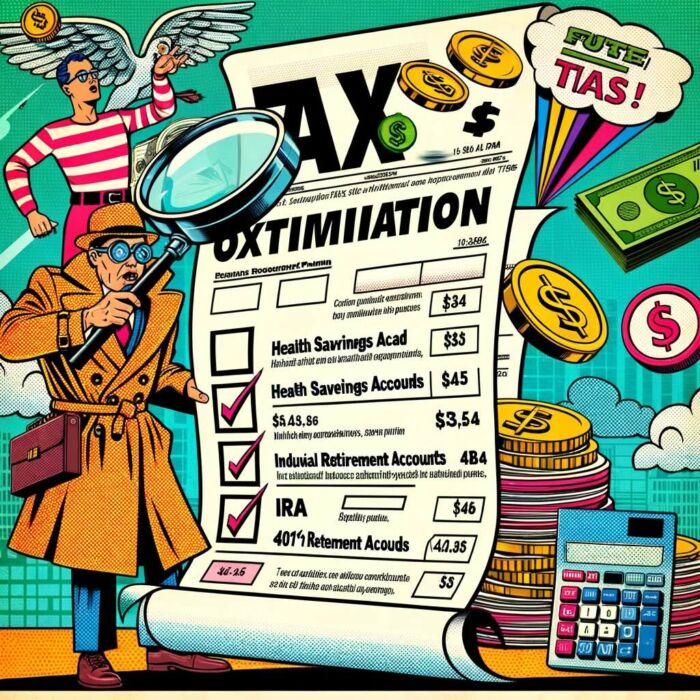
While taxes are an inescapable part of life, understanding how to navigate them efficiently can make a significant difference in your journey to financial independence. In this section, we’ll delve into tax-efficient investing, the use of tax-advantaged accounts, and the implications of tax laws on your FIRE aspirations.
Tax-Efficient Investing
Think of tax-efficient investing as the art of maximizing your returns while minimizing your tax liabilities. This might involve strategies like holding onto investments longer to qualify for long-term capital gains rates, which are generally lower than short-term rates. Or, it could mean strategically balancing between taxable and tax-advantaged accounts based on the tax efficiency of various investments. For instance, you might place investments that generate a lot of taxable income (like bonds) in tax-advantaged accounts, while keeping more tax-efficient investments (like index funds) in taxable accounts.
Utilizing Tax-Advantaged Accounts
We’ve already discussed retirement accounts like 401ks and IRAs. These are examples of tax-advantaged accounts, and they should be your best friends on your FIRE journey. Utilizing these accounts to their full potential can help shield a significant chunk of your income and investments from taxes. Remember, every dollar saved in taxes is another dollar you can invest towards your financial independence.
In addition to 401ks and IRAs, there might be other tax-advantaged accounts relevant to your situation, like Health Savings Accounts (HSAs) or 529 plans for education savings. Understand the specifics of these accounts and leverage them to optimize your tax savings.
Understanding Tax Laws and Implications on FIRE
Tax laws can be complex and ever-changing, but having a basic understanding of them is crucial for anyone seeking FIRE. For instance, you’ll need to know about possible penalties for early withdrawal from retirement accounts and how to avoid them. You might have heard of the “Roth Conversion Ladder” or “Rule of 55,” strategies used to access retirement funds early without penalties.
Also, remember that your tax situation may change dramatically once you achieve FIRE. You might go from a high tax bracket (due to high income) to a lower one because your living expenses (withdrawals from your investments) could be significantly less than your income was. This drop can have various tax implications, and understanding them can help you plan your post-FIRE finances more effectively.
Taxes might seem like a thorn in your financial side, but with the right strategies, they can be managed and even used to your advantage. As the old saying goes, “In this world, nothing is certain except death and taxes.” We can’t do much about the former, but with tax-efficient investing, fully utilizing tax-advantaged accounts, and understanding tax laws, we can certainly make the latter a little less daunting on our journey to FIRE.
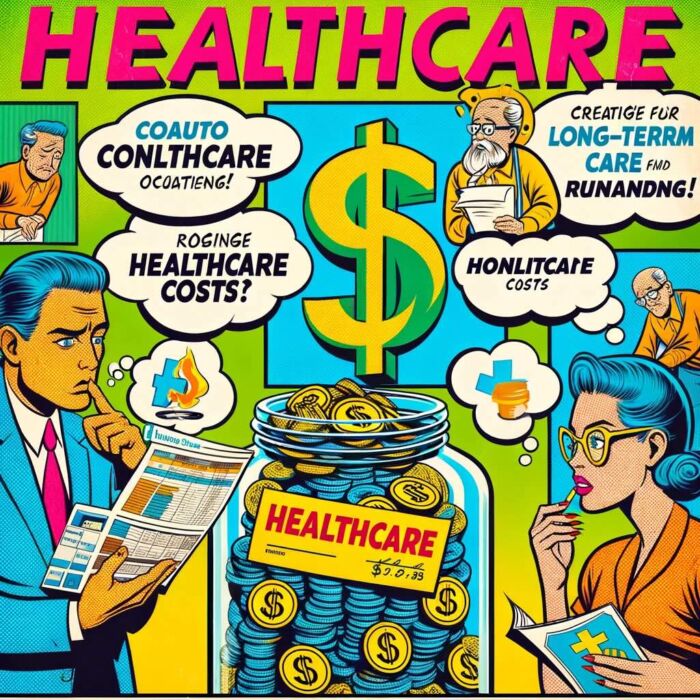
Health Care Considerations
Healthcare: it’s a topic that can quickly cloud the sunny skies of your FIRE journey with uncertainty. Unlike many countries, where healthcare is publicly funded, in the U.S., healthcare is primarily private, and the costs can be significant. In this section, we’ll examine the impact of healthcare costs on your FIRE plans, strategies to plan for healthcare in early retirement, and the different health insurance options available to you.
Understanding the Impact of Healthcare Costs
When planning for FIRE, healthcare is often the elephant in the room. According to a Fidelity study conducted in 2020, a 65-year-old couple retiring then could expect to spend $295,000 on healthcare throughout retirement. And that’s just the average. The reality is that healthcare costs can be unpredictable, and they tend to rise as we age. Understanding this impact is the first step to planning for it.
Planning for Healthcare in Early Retirement
If you retire early, you might lose your employer-provided health insurance before you qualify for Medicare at age 65. Planning for this gap is crucial. One strategy is to create a separate savings account specifically for healthcare costs. This can be a part of your FIRE number or separate from it, but it should be there.
You also need to consider long-term care. While it’s not a pleasant thought, the reality is that many of us might need some form of long-term care as we age. Including this in your planning can save you and your family from financial hardship down the line.
Health Insurance Options
If you’re thinking, “What about health insurance?” You’re spot on. Here are a few options:
- COBRA: This law allows you to keep your employer’s insurance coverage for up to 18 months after you leave. But be warned, you’ll likely have to pay the full premium yourself, which can be costly.
- ACA Plans: The Affordable Care Act (ACA) provides health insurance options through state-based exchanges. Depending on your income, you might qualify for subsidies to help cover the cost.
- Health Sharing Ministries: These are cooperative groups, where members share each other’s healthcare costs. They’re not insurance, but they can be an affordable way to cover large health expenses.
- Self-Insurance: If you have a significant nest egg, you might choose to self-insure, covering your healthcare costs out of pocket. This approach carries more risk but can provide more flexibility.
While healthcare can be a complex piece of the FIRE puzzle, it’s also a critical one. By understanding the impact of healthcare costs, planning for them in early retirement, and exploring different insurance options, you can remove some of the question marks around this vital topic. Remember, FIRE isn’t just about financial independence; it’s also about living a fulfilling and healthy life, and good healthcare is a crucial part of that equation.

Psychological Aspects of FIRE
The journey to FIRE isn’t just about money; it’s also a deeply personal and emotional journey. While the financial aspects of FIRE often take center stage, the psychological elements are just as important, if not more so. In this section, we’ll explore how to cope with lifestyle changes, deal with social pressures, and prepare for the emotional aspects of early retirement.
Coping with Lifestyle Changes
Whether it’s cutting down on expenses, taking on a side job, or learning to invest, the road to FIRE can involve significant lifestyle changes. While these changes can be exciting, they can also be stressful and challenging.
One way to cope is to view these changes not as sacrifices, but as conscious choices you’re making towards a greater goal. Instead of feeling deprived when you skip a luxury purchase, you might feel empowered because you’re choosing to invest in your future independence.
Creating a supportive environment can also be beneficial. This might mean surrounding yourself with like-minded individuals, online or offline, who understand your FIRE journey and can offer support and advice.
Dealing with Social Pressures
Social pressure can be a significant obstacle on your FIRE journey. From friends who don’t understand why you’re not splurging on the latest gadgets to family members who question your decision to retire early, it can feel like you’re swimming against the current.
Remember, it’s your journey, not theirs. You don’t have to justify your choices to anyone. However, explaining your goals and motivations can help others understand your decisions. And who knows? You might inspire them to embark on their own FIRE journey.
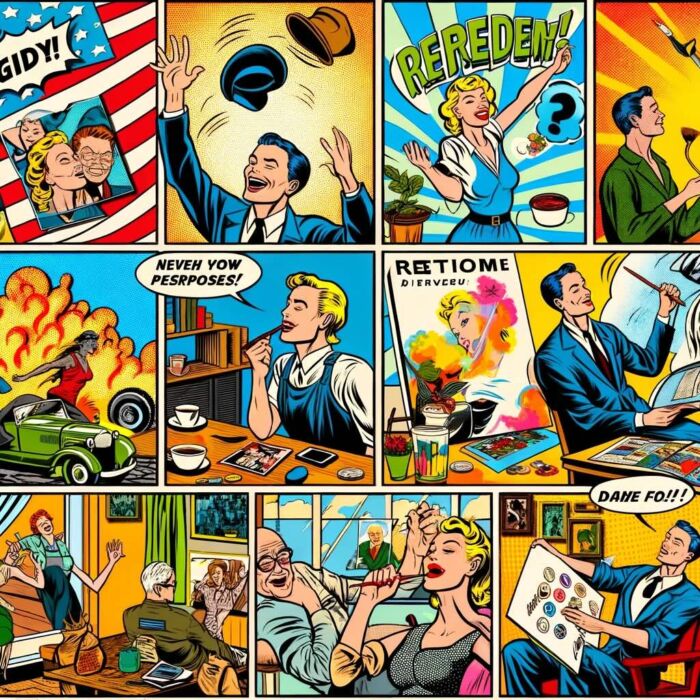
Preparing for the Emotional Aspects of Early Retirement
Retirement, especially early retirement, can be an emotional rollercoaster. One minute you’re reveling in your newfound freedom, the next you’re feeling aimless and adrift. Preparing for these emotional shifts can make the transition smoother.
First, understand that it’s normal to have mixed feelings about retirement. It’s a significant life change, after all. Second, realize that retirement isn’t just about leaving your job; it’s about stepping into a new phase of life. What will you do with your time? How will you find purpose and fulfilment? Answering these questions ahead of time can help set the stage for a fulfilling and enjoyable retirement.
The journey to FIRE is as much about the destination as it is about the journey itself. The lifestyle changes, social pressures, and emotional shifts can be challenging, but they can also lead to growth, resilience, and a deeper understanding of what truly matters in life. After all, FIRE isn’t just about retiring early; it’s about living life on your own terms.

Course Correction: What if you’re Behind?
The road to FIRE is rarely a straight and smooth highway. More often, it’s a winding path with its fair share of bumps and detours. So, what do you do if you find that you’re behind on your journey? In this section, we’ll explore strategies to get back on track, methods to re-evaluate your financial goals, and ways to keep your motivation high, even when the road gets rough.
Strategies to Get Back on Track
If you’re lagging in your FIRE journey, don’t despair. You have options. One is to increase your income, either by negotiating a raise, switching to a higher-paying job, or earning money on the side. Another is to cut costs. Look at your expenses and see where you can make reductions. It could be as simple as eating out less or as significant as downsizing your home.
You could also consider adjusting your investment strategy. Perhaps you’re too conservative and could benefit from a higher equity allocation. Or maybe you’re not taking full advantage of tax-advantaged accounts. Either way, reviewing your investment strategy can potentially boost your returns and speed up your FIRE journey.
Re-evaluating Financial Goals
If you’re behind on your FIRE journey, it might be time to re-evaluate your financial goals. Maybe your initial FIRE number was too optimistic. Or perhaps your personal circumstances have changed, and you need to adjust your goals accordingly.
When re-evaluating your goals, be realistic but also keep your vision in sight. Don’t be disheartened if you have to push back your FIRE date a bit. Remember, it’s better to reach financial independence a bit later than expected than to rush into it unprepared.
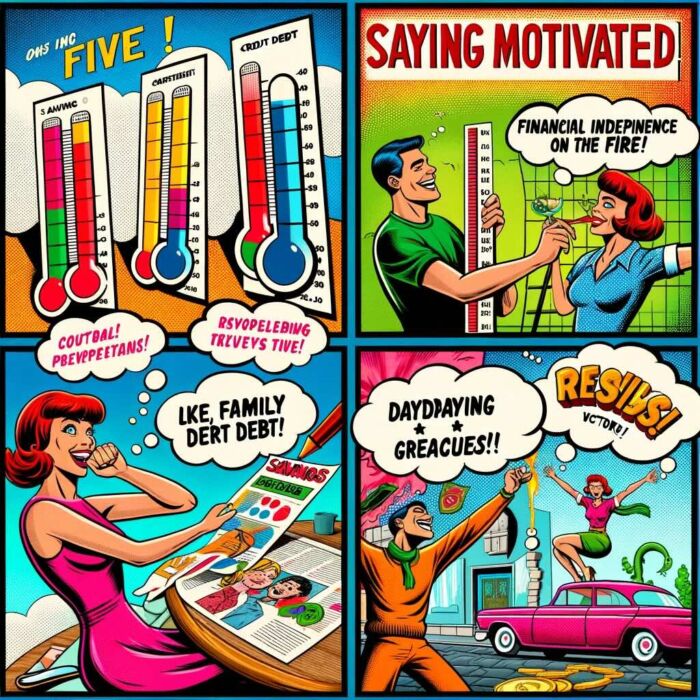
Motivating Yourself to Stay on the Journey
When you’re behind on your journey, it’s easy to lose motivation. One way to stay motivated is to celebrate your progress, no matter how small. Did you increase your savings rate? That’s a win. Did you pay off a credit card? That’s another win. These victories, no matter how small, are signs that you’re moving in the right direction.
Another motivation booster is to remind yourself of why you started this journey in the first place. Is it to spend more time with your family? To travel the world? To work on passion projects? Keep your “why” at the forefront of your mind. It’s your North Star that will guide you even when the road gets tough.
Remember, the journey to FIRE is not a sprint; it’s a marathon. It’s normal to have periods where you fall behind. What’s important is not to get discouraged but to assess your situation, adjust your strategies, and keep going. After all, the sweet taste of financial independence is worth every bit of effort.
source: The Money Guy Show on YouTube
Conclusion: 40’s FIRE Journey
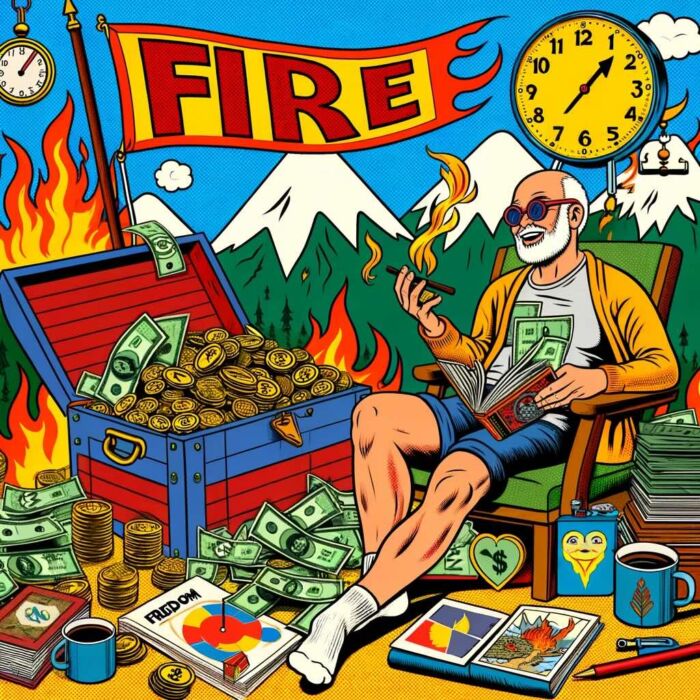
As we wrap up this deep dive into the journey towards achieving FIRE in your 40s, it’s important to remember that financial independence isn’t about having an enormous pile of money. It’s about the freedom that comes with it. The freedom to make choices based on what brings you joy and fulfillment, rather than what brings you a paycheck.
Final Thoughts and Encouragement
If you’re in your 40s and contemplating the FIRE journey, remember, it’s not too late. In fact, you might be at an advantage with potentially higher earnings, and hopefully, a clearer sense of what you want in life. Sure, the path may be steep, requiring discipline, resilience, and adaptability, but the view at the top, the view of financial independence, is absolutely worth it.
Don’t let societal norms or misconceptions dictate your life’s timeline. Who says you have to work until you’re 65? Who says your 40s are too late to change your financial destiny? You’re the author of your life’s story. You get to decide when the chapters begin and end.

Freedom and Options that FIRE Provides
Achieving FIRE opens a world of options. You could choose to leave a job you don’t love, spend more time with family, travel extensively, or pursue passion projects without worrying about the financial aspect. Imagine a life where you’re not constantly checking the clock or counting down to the weekend. That’s the power of FIRE.
However, remember, FIRE doesn’t mean you have to stop working. It just means you now have the choice to do so. Many FIRE achievers continue working in some capacity, often pursuing work they love, without the pressure of needing a paycheck. That’s the beauty of financial independence.
As we conclude this guide, let’s revisit a truth we touched upon earlier: The journey to FIRE is as much about the destination as it is about the journey itself. Each step you take, each dollar you save, and each challenge you overcome shapes you, strengthens you, and brings you closer to a life unbound by financial constraints.
So, here’s to you, the courageous soul embarking on the journey to FIRE in your 40s. May your path be filled with learning, growth, and most importantly, the joy of seeing your dreams of financial independence come to fruition. Here’s to the freedom that awaits. Here’s to your FIRE journey.
Important Information
Investment Disclaimer: The content provided here is for informational purposes only and does not constitute financial, investment, tax or professional advice. Investments carry risks and are not guaranteed; errors in data may occur. Past performance, including backtest results, does not guarantee future outcomes. Please note that indexes are benchmarks and not directly investable. All examples are purely hypothetical. Do your own due diligence. You should conduct your own research and consult a professional advisor before making investment decisions.
“Picture Perfect Portfolios” does not endorse or guarantee the accuracy of the information in this post and is not responsible for any financial losses or damages incurred from relying on this information. Investing involves the risk of loss and is not suitable for all investors. When it comes to capital efficiency, using leverage (or leveraged products) in investing amplifies both potential gains and losses, making it possible to lose more than your initial investment. It involves higher risk and costs, including possible margin calls and interest expenses, which can adversely affect your financial condition. The views and opinions expressed in this post are solely those of the author and do not necessarily reflect the official policy or position of anyone else. You can read my complete disclaimer here.

